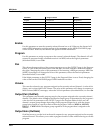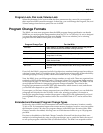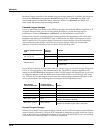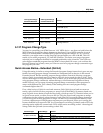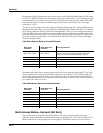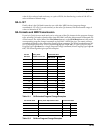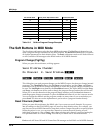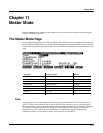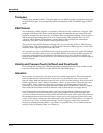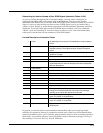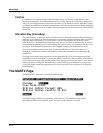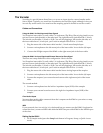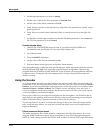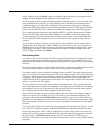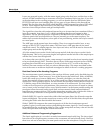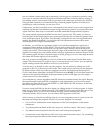
11-2
Master Mode
The Master Mode Page
Transpose
Like the Tune parameter above, Transpose affects every K2661 program, but not those notes sent
to the MIDI Out port. You can adjust the MIDI transposition on the TRANSMIT page in MIDI
mode.
KB3 Channel
The architecture of KB3 programs is completely different from the architecture of regular VAST
programs. KB3 don’t have layers containing keymaps and samples that get played with each
keystrike. Instead, they have an array of oscillators that are constantly running, which requires a
different kind of processing (and more of it). Consequently, a KB3 program won’t run on a
“normal” MIDI channel. It has to have a special channel that processes note information
differently. And that’s what the KB3 Channel parameter does.
There can be only one KB3 channel, although you can set it to be any of the 16 MIDI channels.
It’s like saying “OK, I want Channel 1 to be the channel that plays KB3 programs. All the other
channels are for regular programs and other stuff.”
Any program can play on the KB3 channel, but KB3 programs can play only on the KB3 channel.
If you’re on a keyboard channel that’s not the KB3 channel, and you select a KB3 program, the
program’s name appears in parentheses in the display, and you won’t be able to trigger any
notes on that channel. In this case the box at the left of the display reminds you which channel is
the KB3 channel.
Velocity and Pressure Touch (VelTouch and PressTouch)
If you change the setting of the VelTouch parameter, remember that it also has an effect on the
transmit velocity map (which is on the MIDI-mode TRANSMIT page).
Intonation
Most modern western music uses what is known as equal temperament. This means that the
interval between each semitone of the 12-tone octave is precisely the same as every other
interval. Many different intonation intervals have evolved over the centuries, however, and the
K2661 supplies you with 17 different intonation “tables” to choose from. (There are also a few
extra “tables” listed, which we’ll describe in a moment.) By changing the value for this
parameter, you select from among the intonation tables stored in the K2661’s memory. Each of
these tables defines different intervals between each of the semitones in a single octave.
Scroll through the list of Intonation tables, and listen for the differences between semitones.
Some of the intervals between semitones may be quite different from equal intonation, but
you’ll notice that all notes are precisely tuned with notes that are an octave apart. This is because
the intonation tables set the intervals within a single octave, and apply those intervals to each
octave. If this doesn’t make sense, the explanation of the Intonation Table Editor, in Chapter 18
of the Musician’s Guide will help clarify things. If you’re hoping to create fully microtonal
tunings by editing intonation tables—sorry, that’s not possible. But you can create microtonal
tunings using the Keymap Editor; see Chapter 14.



